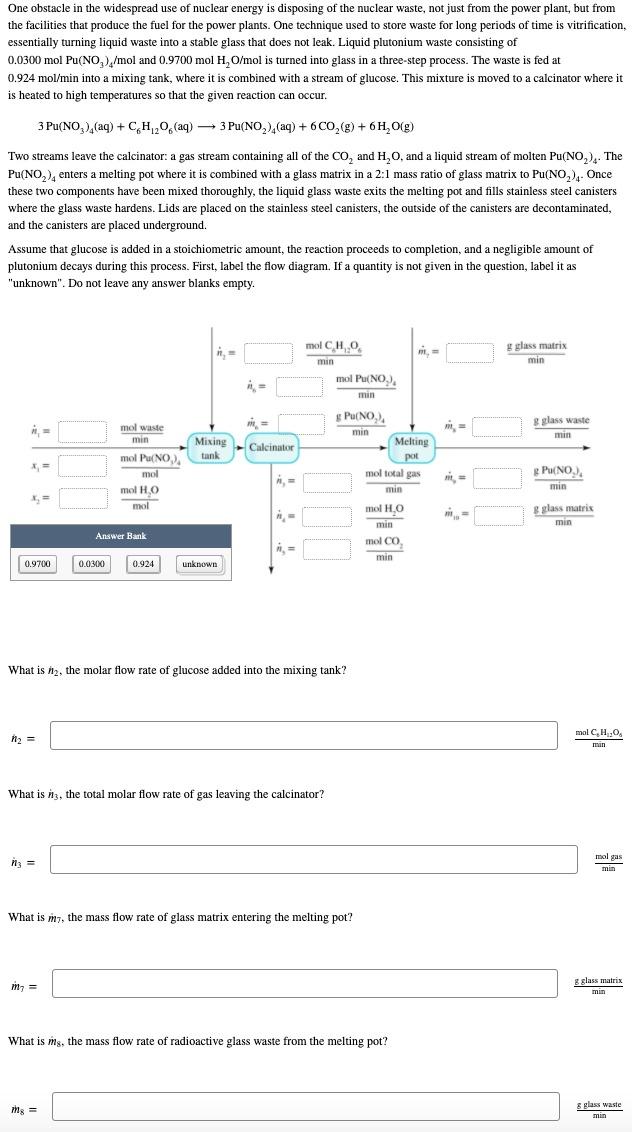
One obstacle in the widespread use of nuclear energy is disposing of the nuclear waste, not just from the power plant, but from the facilities that produce the fuel for the power plants. One technique used to store waste for long periods of time is vitrification, essentially turning liquid waste into a stable glass that does not leak. Liquid plutonium waste consisting of 0.0300 mol Pu(NO) /mol and 0.9700 mol H, O/mol is turned into glass in a three-step process. The waste is fed at 0.924 mol/min into a mixing tank, where it is combined with a stream of glucose. This mixture is moved to a calcinator where it is heated to high temperatures so that the given reaction can occur. 3 Pu(NOx),(aq) + CH20 (aq) 3 Pu(NO2), (aq) + 6CO2(g) + 6H, O(g) Two streams leave the calcinator: a gas stream containing all of the Co, and H, O, and a liquid stream of molten Pu(NO2). The Pu(NO2), enters a melting pot where it is combined with a glass matrix in a 2:1 mass ratio of glass matrix to Pu(NO2). Once these two components have been mixed thoroughly, the liquid glass waste exits the melting pot and fills stainless steel canisters where the glass waste hardens. Lids are placed on the stainless steel canisters, the outside of the canisters are decontaminated, and the canisters are placed underground. Assume that glucose is added in a stoichiometric amount, the reaction proceeds to completion, and a negligible amount of plutonium decays during this process. First, label the flow diagram. If a quantity is not given in the question, label it as "unknown". Do not leave any answer blanks empty. mol CH. 0 , m, g glass matrix E min min mol Pu(NO) min = glass waste min Calcinator PuNO. min Melting pot mol total gas min mol waste min Mixing mol PNO) tank mol mol H.O mol = = ni = = g Pu(NOA min = mol H2O min mol CO B glass matris min Answer Bank min 0.9700 0.0300 0.924 unknown What is 12, the molar flow rate of glucose added into the mixing tank? mol C,H,O, n2 = man What is 13, the total molar flow rate of gas leaving the calcinator? n3 = mol gas min What is my, the mass flow rate of glass matrix entering the melting pot? m2 = & glass matrix min What is ms, the mass flow rate of radioactive glass waste from the melting pot? mg = & glass waste mun







